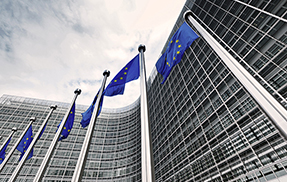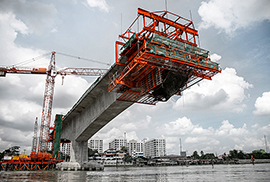Risk Control is among the recipients of funding announced by the MDB Challenge Fund at the June 2023 New Financial Pact Summit, chaired by Emmanuel Macron, President of the French Republic and Narendra Modi, Prime Minister of India.
The main aim of the MDB Challenge Fund is to accelerate MDB financing that will further the United Nation’s Sustainable Development Goals (SDGs) and adjustment to climate change.
The two funded Risk Control projects will help Multilateral Development Banks (MDBs) build on the recommendations of the G20’s Independent Review of Multilateral Development Bank Capital Adequacy Frameworks (CAF).
The first project will deliver analysis to support the new markets in MDB risk transfers, creating insights and technical tools for Balance Sheet Optimization (BSO).
MDB risk transfer markets are new. Some landmark transactions have already demonstrated how risk transfer can boost the lending capacity of MDBs without impairing their credit standing. These include Exposure Exchanges between large regional MDBs, the AfDB’s Room2Run deals and guarantees provided to MDBs by prominent donors.
But growth in any new financial market is hampered by the lack of familiarity that investors and issuers have in the instruments. In this Risk Control project, we will aim to will help investors, shareholders, and MDB boards to understand the potential of such transactions and tap a sustainable risk-bearing capacity from investors.
The project will generate four research papers, tackling key questions that hamper further expansion in MDB risk transfer activity.
The four questions that the project will analyse are:
I. How does MDB loan performance compare to that of private lending?
II. What is the relative efficiency of prototype MDB risk transfers?
III. How should MDBs and their risk transfers be rated in the light of PCT?
IV. How should MDB assets and risk transfers be priced in the light of PCT?
The project will also assist MDBs by developing the digital architecture necessary to implement risk transfers. Currently a minority of MDBs are actively involved in risk transfer (although a wider group is in the process of considering potential entry projects). The project will work with the MDBs that are operational to create data standards, templates and tools necessary for providing investors with data to evaluate risk transfers.
We will generate a set of XML templates for MDB loans suitable for stable, repeated exchanges of data with participating developed-country investment institutions. The templates will be comparable to those provided by central banks and the European Securities and Markets Authority (ESMA). The templates will include credit related indicators that investors require, and indicators of Sustainable Development Goals (SDGs and Environmental, Social and Governance (ESG).
The second project will benchmark capital adequacy across MDBs to increase transparency for MDB shareholders, boards, and management, while providing metrics of credit standing that are alternatives to agency ratings.
MDBs are now at an important crossroads at which decisions will be taken regarding new strategies aimed at boosting lending capacity. It is important for boards to consider the risks that their institutions face and how their banks compare to peers so that they can make choices consistent with shareholder objectives and institutional needs.
Unlike commercial banks which work within the Basel framework provided by regulatory capital and liquidity rules and can compare themselves with peers very easily, MDBs must adopt their own benchmarks. Ratings are emphasised in the risk management of many MDBs precisely because they apparently offer comparability with peers. But agency ratings have arbitrary elements, and they weight many factors (capital adequacy, liquidity, shareholder support and others) in ways that do not allow transparent comparisons of relative risk.
MDB boards would, therefore, benefit from having non-rating agency benchmarks designed for their own sector and based on industry-standard, Economic Capital methodologies. By delivering these and, also, providing comparable and clear information on the different risk policies and methodologies of the MDBs, the project will increase the quality of MDB board decision-making and contribute to understanding between the management, boards and shareholders of MDBs.
The project will involve working with MDBs to devise a standard approach to MDB capital adequacy. The approach will consist of methodologies for different risk types (credit, market, operational and pension risk) plus an approach to risk type aggregation. The methodology will be installed in a portable software tool developed by Risk Control’s team.
This project would generate five deliverables:
(a) An Economic Capital methodology suitable for application to the portfolios and risk profiles of MDBs, plus the methodology for a set of additional risk measures (for example, leverage ratios, Liquidity Coverage Ratios) to be agreed as part of the project.
(b) A computational implementation (with documentation and a user guide), suitable for calculating Economic Capital and other risk measures once appropriate exposure and risk
parameter data have been uploaded.
(c) A qualitative analysis of the approaches used by MDBs with commentary on the common points and differences.
(d) Risk reports at individual-MDB and aggregate-across-MDB levels.
(e) Dissemination.
Dissemination of results will occur at various stages of the projects.
The project will be completed by end-April 2024.


